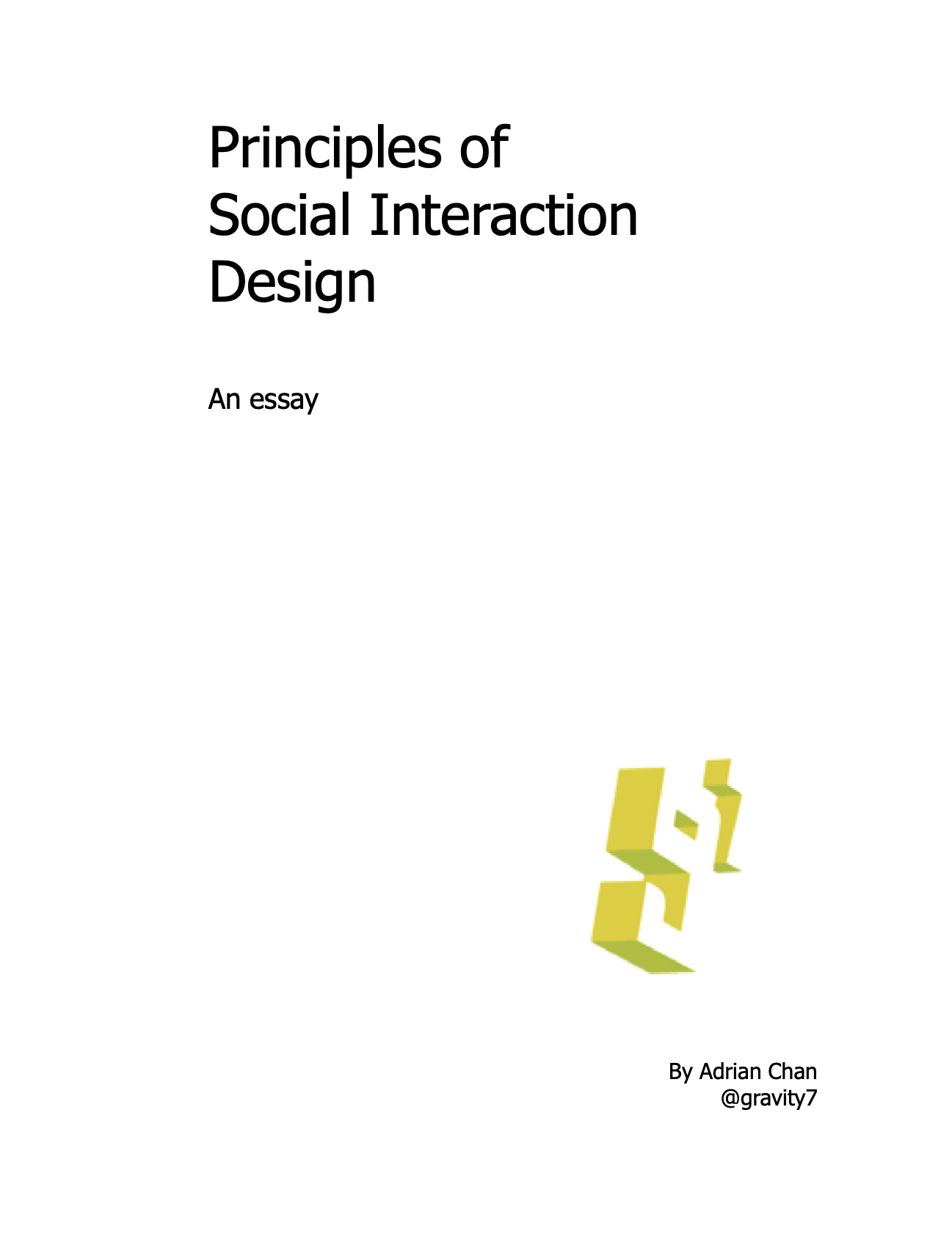
Principles of Social Interaction Design?
Social media are talk technologies. They are the means of production in an age of communication. They aid in the production and exchange of knowledge and information and culture, based on human interests. They are media in which people see themselves represented. Their impact is as much psychological and social as it is technical.
In recent years, social media have come off the page. Social tools have become more talkative, mobile, and real-time. They have taken a conversational turn. And as these social tools increasingly facilitate relationships and communication, their role in these deeply personal and social dynamics has become a matter for design. The need for a deeper understanding of the fit between tools and social interactions calls for a new design practice. This is social interaction design.
Social interaction design sits somewhere in between people and technology — in a place one might call the social interface. And the interactions that concern social interaction design are those among people, not just between the people and applications.
Design is concerned not only with social media products and services but also what people do with them. Social interaction design covers the screen elements and application features of social media as well as “user” behaviors and social practices. It is in social practices, and the emergence of cultural pastimes and patterns of use, that social interaction design really comes into its own.
At the heart of social interaction design is a query. “What makes social media work?” Social media work because people figure out what a social tool is based on what they see other people doing. People are interested in the interactions and communications of people. Social interaction reveals what’s going on — what an application or site is about. These are social practices, and they are established through the self-reinforcing activities of participating users.
If it is use that makes a social tool successful, can success be designed? Were hits like Facebook and twitter designed for their success? Or did their adoption become a virtuous cycle, piling on growth, and resulting in success? And if it’s easy to identify the social interaction design in Facebook, what of twitter? Perhaps twitter owes its success less to design sophistication and more to simplicity?
Social interaction design wants to understand the ways in which the actions of individuals result in social outcomes. It wants a means of describing and explaining the communication and interaction practices of people in ways that relate to human interests. It wants methods and techniques that reflect what people do — not what technology enables.
This essay explores the factors that make up the user experience in social media. It is an examination of human psychology and the unique motives and motivations that underly use of social tools. It examines how users become interested in themselves and in others. And it proposes some design theoretical observations and descriptions tailored to the mechanics, if you will, of successful social media services.
The design world occasionally talks about “compelling the user” to behave in a certain way. Designers are encouraged to obtain desired behavioral outcomes by means of user incentives. Some designers may believe that “their” users indeed manifest the in-built preferences of the designer. In the world of social media, this kind of thinking has led to “gamification,” “game mechanics,” and more. Without directly confronting the assumptions made by game mechanics vis-a-vis the instincts of people and players, the case for design influence must still proceed from user experience. Incentives, motives, interests, needs, and so on must be recognized for what they are: human, individual, and social. Design might then seek to reflect and resonate with human interests. But it can never be the origin of them. This essay will argue that in social tools, the user interests must be qualified as competencies: skills of interpersonal and social interaction and communication.
These skills can relate to less obviously social habits, such as curating online content, social bookmarking, or building a “personal brand” and Klout. These are valid “user experiences,” and so are worth examining for deeper human interests also. The diversity of users and the wide spectrum their interests that makes the design of social media a unique challenge. And everyone is different. But unlike the design of physical products, the design of social tools depends absolutely and completely on the amplification of fundamental social experiences, no matter how much they are thinned out by the technology. Remove the audience, the representation of an audience, or even the hope of an audience, and all participation dies.
From the intro to Principles of Social Interaction Design (pdf: 175 pp – free download)
